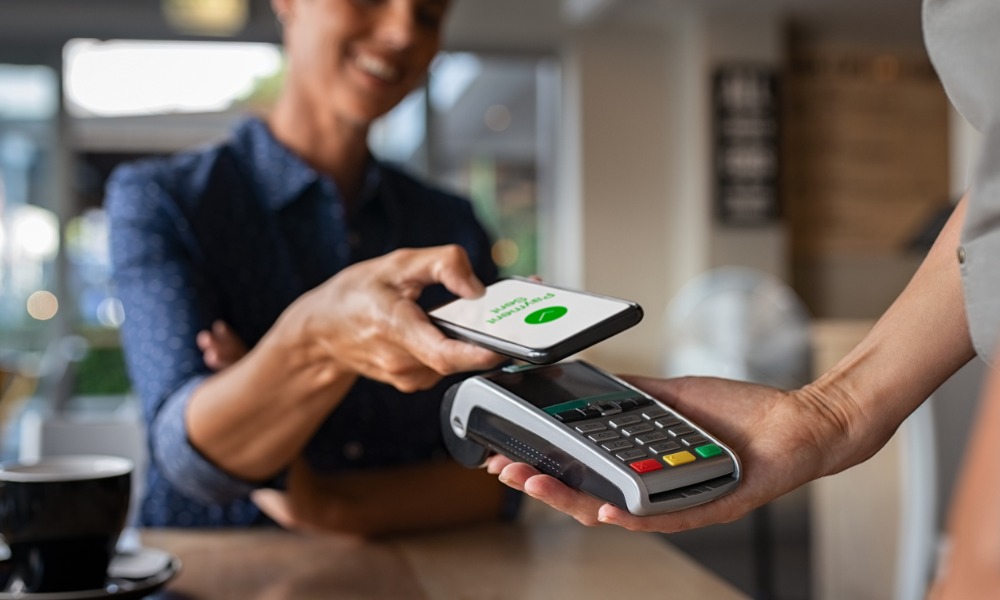ETF features leading firms like Square and PayPal, which are disrupting traditional payment systems

Digital wallet is a phrase bandied around with increasing regularity as firms like Square, with Cash App, and Chime rise in prominence. For the average credit card user, it’s a whirlwind concept. For the innovation-loving investor, it’s a call to arms.
Max Friedrich, an analyst at ARK Invest, the tech-loving ETF provider led by Cathie Wood, explained that the digital wallet space could grow to 230 million users in the U.S. by 2025, creating $4.6 trillion of financial service revenues.
It’s a fintech area investable through the Emerge ARK Fintech Innovation ETF, which trades on the NEO Exchange, and holds the likes of Square (top holding with 9.82%), PayPal, Zillow, Pinterest, Tencent and Shopify.
But what even is a digital wallet? ARK Invest defines it as application on your mobile phone through which you can not only access financial services but also commercial services like ordering a taxi or a takeout, for example.
The innovation claxon rang loud for Wood and her team when digital wallets started showing huge growth in China through the 2010s. From essentially ground zero in 2013, Alipay and WeChat Pay launched wallets and garnered a combined 8 million users in four years. At that moment, the volume of mobile payments actually overtook Chinese GDP.
Friedrich said: “We decided that this is something worth looking into more, and that there must be something going on here. What we saw was that, in these digital wallets, people were not only using them for peer-to-peer transactions or to buy things at local stores, or restaurants or street markets. But, actually, 50% of their screen space was devoted to other commercial applications.
“In China, you can use WeChat Pay or Alipay not only to pay somebody else or pay a business, but you can also order a taxi, you can order food, you can shop online. All of these commercial services are embedded within those finite digital wallets.”
Eyes were opened and an inflection point reached. There are now numerous companies and wallets around the world. North America’s leader is Cash App but there is also Mogo, SoFi, Robinhood, Chime and Venmo (PayPal). Others have emerged in Europe, Africa and South America.
To understand the scale of this growth, Friedrich said it’s taken Cash App and Venmo seven to 10 years to each amass the same number of deposit account holders it took J.P. Morgan more than 30 years and five acquisitions to reach. Not an entirely like for like comparison, of course, but an eye-opening one.
Crucially, ARK believes that customer acquisition costs with a digital wallet are much cheaper – as little as $20 – compared with the expensive legacy infrastructure traditional financial institutions typically have to deal with. He suggested that, on this front, life will get tougher for banks and that, while the large ones are not going anywhere, the smaller regional ones will face real challenges.
Another attraction for long-term investors might be the social pull of these wallets. They are incentivised to bring other people on to the network and, much like social networks, there is a social value.
For example, users are incentivized to invite others so they can send and receive money, and encouraged to stay on the platform because they might get into a potentially uncomfortable social situation if they leave. For example, if somebody is pressing them for money owed or they’re splitting the bill with friends at a restaurant.
ARK forecasts are the result of both top-down and bottom-up analysis, which they constantly revisit to realign expectations. Its best-case scenario of $4.6 trillion is based on, at maturity, each digital wallet being worth about $20,000 in financial services revenue. This analyis is split, with $10,000 coming from commerce activity and the other half coming from financial products like payments, insurance, personal credit and mortgage, saving and spending account, and brokerages.
Friedrich said: “What we do from a portfolio management perspective is follow these companies very closely. Let's say it's for Cash App and we have a model that is driven by this top-down approach. We then check in with a bottom-up reality check and calculate what it did in revenue per customer per year. If that’s not aligned, and we're on a false track, we revisit our assumptions.”



